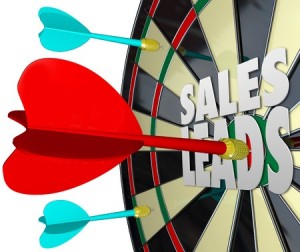The Magic of Selling with Hot Leads.
Salespeople hate cold calling nearly as much as the people they call do. Both hate it for the same reason: it’s intrusive and a waste of time. Yet some companies still cling to this process for no good reason and certainly not because it’s sound business practice. So, what’s the alternative?
The alternative is simple: the salesperson spends valuable time only on hot leads. Hot leads are prospects who initiate the sales process by indicating that they are in the market for the product or service. The salesperson contacts such a prospect and closes the sale by professionally taking care of that person’s requirements. This system hinges on two strategies: empowerment and technology. It’s about empowering both the sales team and the customer by using computer software for records, analysis and monitoring, and the Internet for finding and processing good leads. Salespeople quickly input data about leads, calls, sales, future prospects etc, on the fly. The computer system such as Neat Quotes keeps track of follow-ups and appointments and sends sales quotations to customers allowing them to respond or comment directly on the quote. Sales managers extract data in real time whenever they wish, so the sales people don’t waste time writing reports and attending meetings. This raises the obvious question: Specifically, how does a company use technology to get hot leads?
In a big company, this job is carried out by the marketing department. In a small operation, it’s usually done by the salespeople. In both cases, instead of cold calling, energy is channelled towards building lists of hot leads via advertising, P.R. and targeted mail shots. When salespeople contact those leads, their calls-to-sales conversion rate is likely to be at least sixty percent. The ratio achieved by cold calling is usually between five and fifteen percent. A good example of relatively inexpensive hot lead generation is Web advertising through companies like Google. Ads appear beside content that is related to the service or product being advertised: an advertisement for travel insurance would appear beside a newspaper article about an exotic vacation location. The reader who clicks on such an ad is already interested in the product on sale. The reader becomes a hot lead if he or she goes a step further and contacts the insurance company for more information. A successful sale is likely even before the salesperson becomes involved.
This success is achieved not only because the lead is hot, though that’s vital, but also because the salesperson is empowered by the very fact that the lead is hot. This motivation is the difference between mediocre sales results and very good sales results. A third factor ensures that this process is significantly more successful than cold calling: In a hot-lead environment, on one side is a salesperson who’s highly motivated because he knows that on the other side is a customer who wants to buy from him. As a result, he’s relaxed and has no need to pressurize the customer; the customer too is relaxed because he feels under no pressure. Compare that to cold calling where, from the start, the prospect is unlikely to buy, and resents being harassed by a salesperson who’s well aware of that fact and is demoralized as a result.

